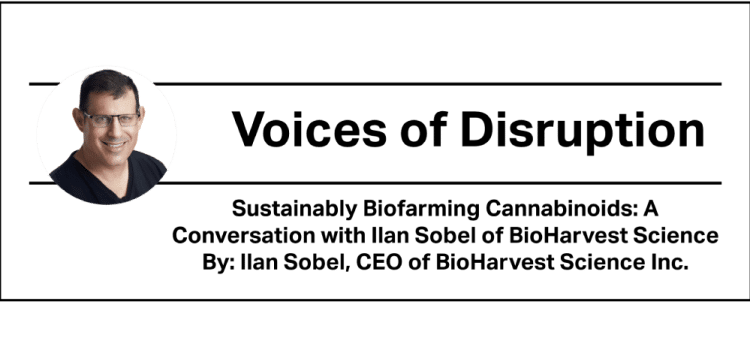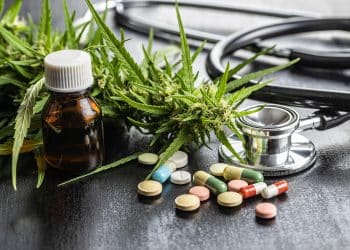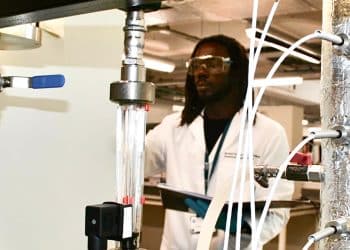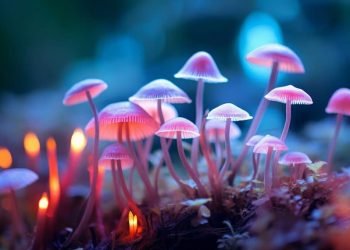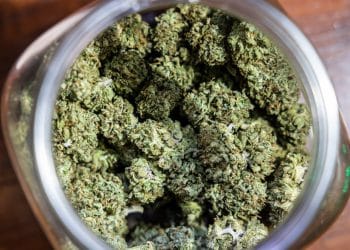Producing the active ingredients of a plant without the need of growing the plant itself. This is the futuristic goal that’s actually been reached by BioHarvest Science Inc., a biotechnological company based in Vancouver, British Columbia, who have recently developed the patent-protected “biofarming” method. The breakthrough innovation, already scaled to an industrial level, can incredibly reduce the costs and time associated with the production of active plant ingredients without the use of genetic manipulation.
BioHarvest adapted biofarming technology to cannabis plants by growing cells associated with cannabis trichomes. They are able to produce full-spectrum cannabis extracts in their bioreactors. Recently, they revealed the successful growing of multiple trichomes in coral-shaped clusters. The amalgamated trichomes coral structure (ATCS) can protect the trichomes, thereby guaranteeing mechanical stability during the growth process within the bioreactor.
Manufacturing the secondary plant metabolites by naturally growing the specific plant cells needed in an aseptic environment allows a consistent production of active ingredients in a non-seasonal dependent manner and without undesired materials like sugars or fats. In terms of sustainability, the Biofarming method reduces the amounts of water and land needed to cultivate cannabis crops. Labor, capital, and production costs are diminished, while the quality and consistency of final products is perpetual and linked to the chosen bioreactor growing parameters.
Whether BioHarvest’s technique of producing active plant compounds will completely revolutionize cannabis market will be elucidated in time, however, in 2022, the company expects the commercialization of the first cannabis- and hemp-based products generated with the innovative Biofarming technology. We spoke with Ilan Sobel, CEO of BioHarvest Science Inc. to know more about their pioneering work and milestones for cannabis production.
What is BioHarvest’s mission?
Bioharvest is a biotech innovator specializing in plant biology. The mission is to scientifically and sustainably leverage nature to improve human health and wellness. The method consists of the industrial scale, consistent, and economic production of primary and secondary metabolites (polyphenols, cannabinoids, proteins, etc…) derived from natural plants and fruits.
Can you describe the Biofarming process?
Biofarming is actually a full-spectrum, non-GMO [genetically modified organism] biosynthesis. Plant cells, taken from the original source plant and used only once, are grown in liquid medium in large scale bioreactors to consistently produce primary or secondary metabolites. In the case of cannabis, we focus on the trichomes cells as they are the natural micro-factory of cannabinoids. The growth cycle is just three weeks and ends with harvesting a bio-mass of cannabinoids with a composition profile identical to the source plant. Our process is the most eco-friendly and sustainable method to produce cannabinoids.
In regular cultivation, the entire plant is grown in soil. This is a cycle of several months until a flower contains trichomes and cannabinoids are naturally growing. Conventional agriculture (as in any plant or fruit) will produce an inconsistent composition of cannabinoids as each cycle would be subjected to natural variabilities that cannot be controlled. It is a very inefficient way of producing cannabinoids as you are growing the entire plant to just get the compounds grown in the trichomes which grow on the surface of the flower. Conventional agriculture also subjects the plant to fungi and mold. Using the Biofarming technology, we only grow the trichomes. It is done on a three-week cycle as the cells we start with are always in the flowering stage. The production is done in liquid medium and aseptic conditions. The technology provides for full control of all required growth conditions such that the end result is always a consistent bio-mass of cannabinoids. Biofarming is the most economic and efficient way of producing full-spectrum cannabinoids. And again, it is the only way to produce cannabinoids sustainably.
Is the terpene profile consistent from one Biofarming process to another?
We are currently investigating this. Measuring terpenes is very challenging as they evaporate during the drying process and they are not found in cannabis oil. We will have a better understanding of this in the next few months.
Your recent press release said that you’ve been able to keep cannabis cells in a flowering stage for two years. Can you elaborate on what that means, and why that’s important?
The first step in the Biofarming technology is to create a reservoir of cells that are taken one time from the source plant. In the case of cannabis, we take the trichomes cells at the flowering stage and therefore, they remain perpetually in that stage. We bypass all other stages. The original cannabis plant pertaining to a specific cultivar is used only once as this reservoir can always be replenished from the harvested trichomes cells perpetually. The mentioning of two years is because that is from the time we started but these cells remain in perpetuity and are stored at a very low temperature.
What are the ramifications of this technology for cannabis prices and product demand? What conventional farming practices does it eliminate?
In essence it replaces convention agriculture when the desired end result is the production of cannabinoids. It is true for any medicinal use as well as for recreational (except when the user wishes to go through the entire experience of grinding the bud by himself). The Biofarming production of cannabinoids is an order of magnitude cheaper and therefore will dramatically impact prices to the extent that it would increase the legal cannabis part of the cannabis market. Biofarming produces cannabinoids in a form of combustible flakes just like a ground flower.
What other industries are currently using or planning to use this technology?
No other companies or industries are using our proprietary technology.
How do you see this technology being implemented? Say someone wanted to start up a cannabis cultivation facility, and came across your technology. How would their facility design change?
They should rather stop cultivating unless the use case is the entire flower for certain recreational needs. They will have to figure out how to license our technology or buy bio-mass from BioHarvest.
Some people disagree with creating cannabinoids outside of the plant via technologies like fermentation or synthesis. How does this process and technology differ?
It is a natural full-spectrum cannabinoids production. It is the mimicking of the natural biosynthesis process of conventional agriculture. We do not use any GMO and we do not produce isolated cannabinoids. It is clean and consistent. The produced biomass is equivalent to ground flower. We believe product manufacturers and consumers will adopt and appreciate our technology, especially for its sustainability credentials.
